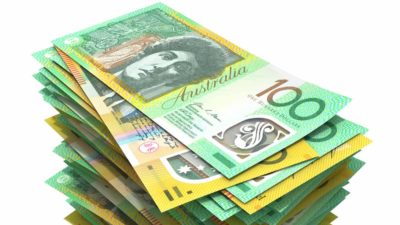Coles Group Ltd (ASX: COL) shares have done better than the S&P/ASX 200 Index (ASX: XJO) in 2023 to date. I think the supermarket business could continue to outperform and it may deliver strong passive income.
Coles shares have risen 9.5%, while the ASX 200 has only climbed 6%.
The supermarket company has managed to grow its earnings and dividends over the last few years.
I think earnings growth can be a key driver for both improving the Coles share price and growing the dividend.
One of the simplest drivers of Coles' earnings is population growth in Australia. The more potential customers there are in the country, the more items that can go through Coles checkouts. The return of immigration to Australia is likely to help the business, in my view.
But, I think the projections are very promising for the Coles share price and dividend.
Growth expected
Commsec numbers suggest that Coles could generate earnings per share (EPS) of 81 cents in FY23. This would put the Coles share price at just over 22 times FY23's estimated earnings.
The supermarket business could then generate 83.6 cents of EPS in FY24, which would be a valuation of under 22 times FY24's estimated earnings.
Finally, the current projections suggest a larger jump in profit in FY25, with EPS forecast to rise to 95.5 cents. This would put the company at 19 times FY25's estimated earnings.
The dividend is also expected to keep growing.
The two dividends from the business in FY22 amounted to 63 cents per share. Commsec suggests that the FY23 dividend per share could be 65 cents, which would be a grossed-up dividend yield of 5.15%.
The dividend could rise to 67 cents per share in FY24, which would be a grossed-up dividend yield of 5.3%.
Commsec numbers suggest that Coles could grow its dividend to 76 cents per share, which would be a grossed-up dividend yield of 6%. That's good passive income and it could keep growing nicely from there.
Why I think Coles shares can outperform
Coles continues to grow revenue, which can be a useful driver for earnings before interest, tax, depreciation and amortisation (EBITDA), earnings before interest and tax (EBIT) and net profit after tax (NPAT).
The company's profit margins are currently being boosted by the reduction of COVID-19 costs, as well as the cumulative $1 billion of benefits from its 'smarter selling' program.
Smarter selling benefits include better checkouts, energy reductions, measures to stop theft, and using advanced analytics and store-specific data to optimise markdown rates.
The business is also working on its automated distribution centres, which can help the business become more efficient and profitable.
When we combine the prospect of good passive dividend income, rising profit and re-investment into better technology, I think the outlook is bright.









